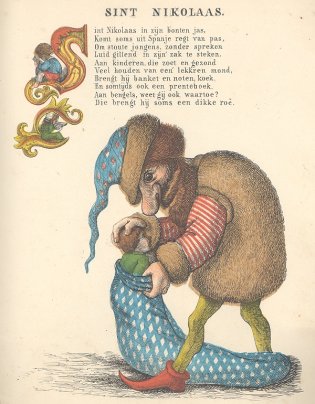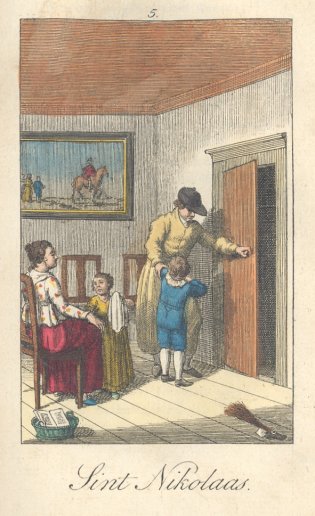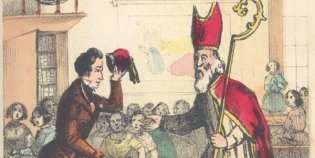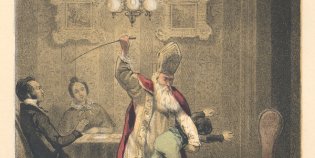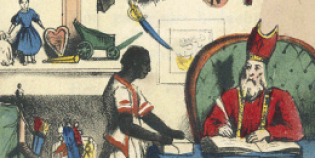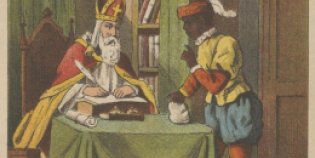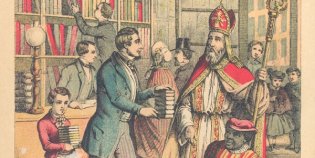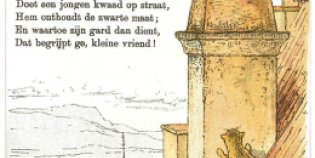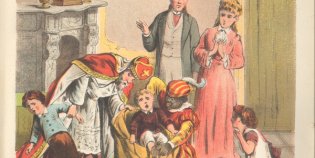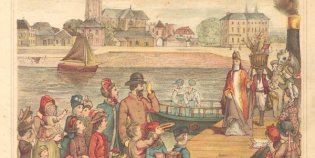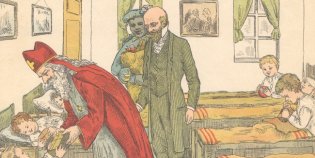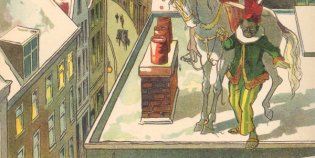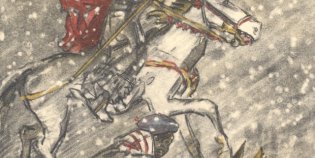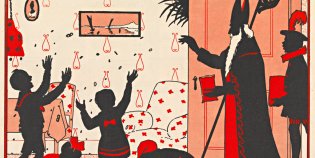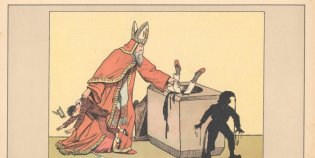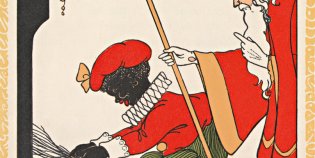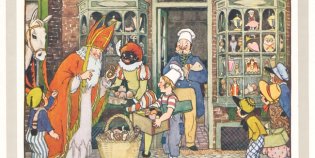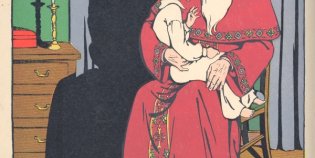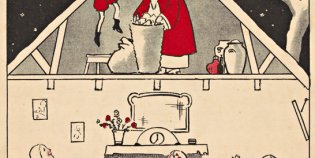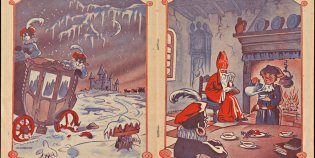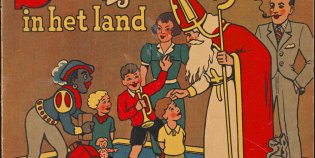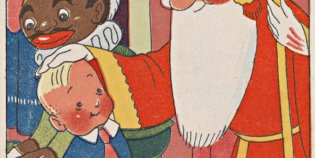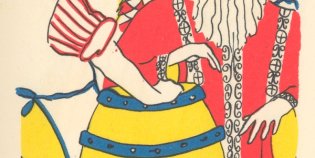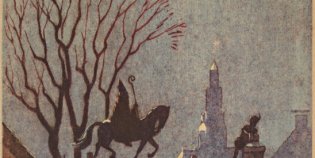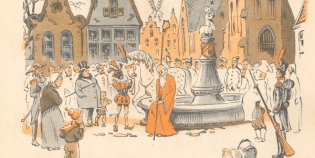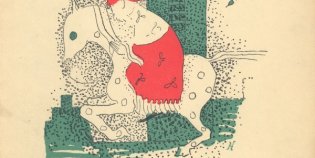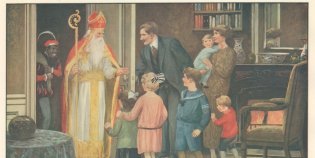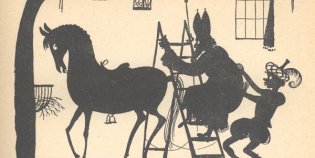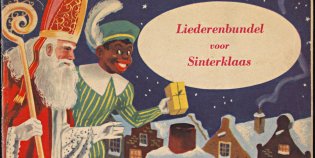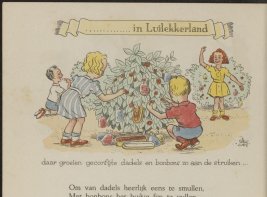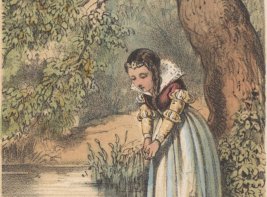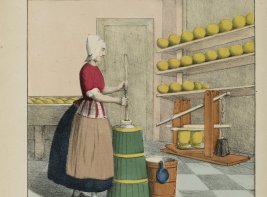The KB collection is full of books about Sinterklaas, showing exactly how he evolved over time. We keep these books to enable research into our culture or history.
What do we know about Sinterklaas?
Sinterklaas is based on the Turkish Saint Nicholas, who lived in the 4th century CE. After inheriting money from his parents, he used it to carry out many good deeds, the stories and legends of which first emerged about 200 years after his death. For example, he is said to have provided dowries for the three daughters of a poor nobleman, throwing gold coins through the window and possibly laying the foundation for the practice of throwing sweets. In another story, the money ended up in the girls' shoes, thus inspiring the tradition of putting out a shoe for Sinterklaas.
St. Nicholas is also the patron saint of sailors, which explains why many port cities have a Saint Nicholas church. Sinterklaas' connection to the sea has persisted to this day – he still sails on his steamer from Spain every year.
St. Nicholas Day
In Europe, St. Nicholas Day has been celebrated since the 13th century. In mediaeval times, a child bishop and helpers would be chosen from amongst the city's poor on 6 December. These children would then be given food and lavished with gifts until 28 December, the day of the Feast of the Holy Innocents. All the other children were given money and a day off, so they could celebrate on 6 December. In the Netherlands, this highly Catholic festival disappeared in the 16th century, when Protestantism rapidly gained in popularity. The celebration slowly came back into fashion in the 19th century, but it was not until 1934 that Sinterklaas had his first 'official' arrival in Amsterdam. This big annual event was first televised just 18 years later, in 1952.
Disclaimer
These images may be perceived as offensive, discriminatory or racist. Please read our disclaimer to see how KB handles works of this kind.
Read more
Books
- Marcus Vankan, Heilige Nicolaas, bruggenbouwer tussen Oost en West: 1700 jaar devotie, legenden en volksgebruiken, 2020.
- Eugenie Boer & John Helsloot, Het Sinterklaas boek, 2009.
- Bram van der Vlugt, Erik van Muiswinkel & Jochem Myjer, Sinterklaas bestaat!, 2012.
- W.M. Nijkamp, Kind en Sint: opvoedingsproblemen in Sinterklaastijd, 1952.
Articles
- Frits Booy, "Het sinterklaasfeest in negentiende-eeuwse kinderboeken", in: De boekenwereld, vol. 33 (2017), afl. 4, p. 58-63.
- Frits Booy, "Het beeldbepalende sinterklaasboek van Jan Schenkman uit 1850", De Boekenwereld, vol. 31 (2015), p. 62-69.
- Willem Koops, Madelon Pieper en Eugenie Boer (red.), Sinterklaas verklaard, 2009.
- P.J. Buijnsters en L. Buijnsters-Smets, Lust en leering. Geschiedenis van het Nederlandse kinderboek in de negentiende eeuw. Zwolle, Waanders, cop. 2001.
